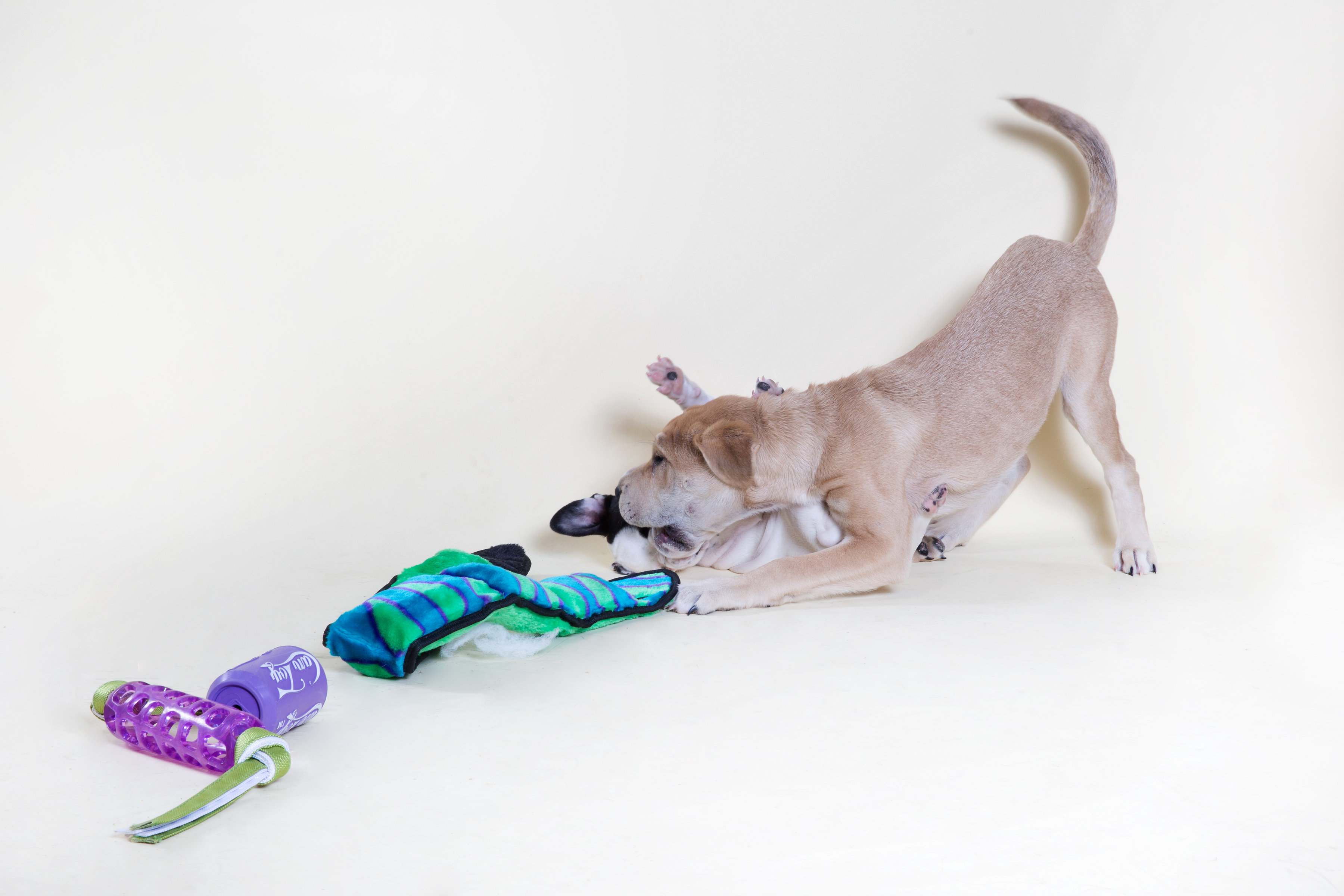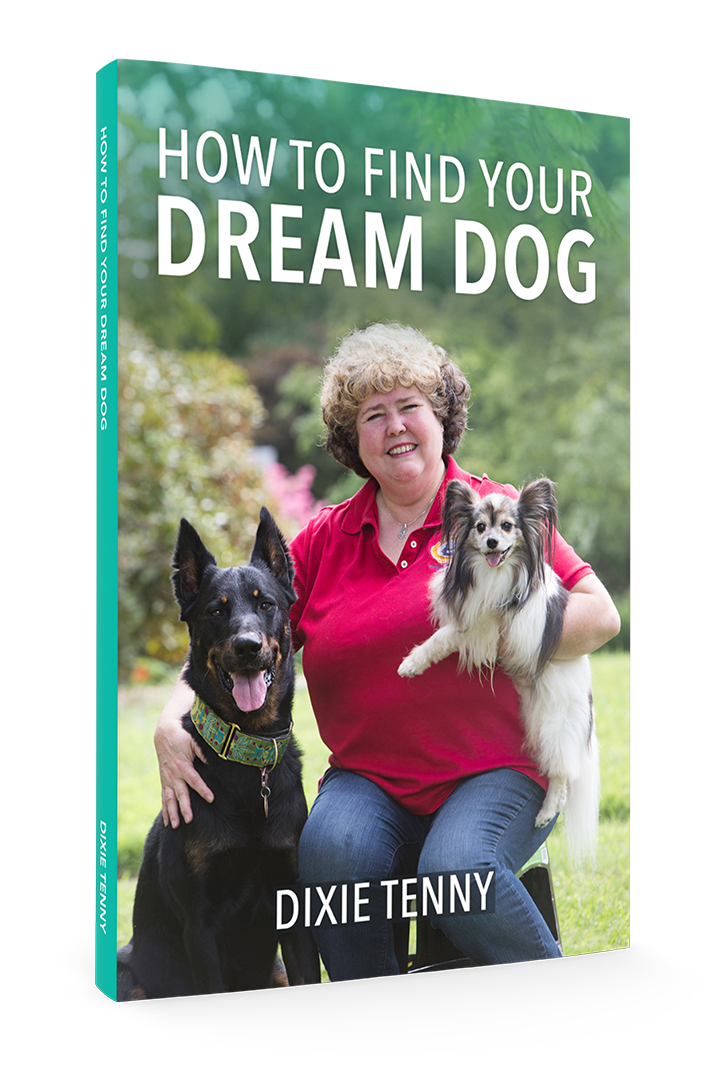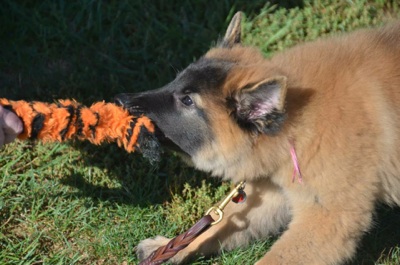Many puppy owners feel that they must have a treat in hand to reinforce their puppy’s wanted behaviors, which is one reason why some people resist the idea of positive reinforcement training altogether: ‘I can’t always have treats on me!’ But there are many ways to reinforce behavior, and food is just one of them.
What is the difference between reward and reinforcement? A reward is focused on the giver. The dog performs a behavior you like, you toss him a treat. He might not like that particular treat, or he might not be in the mood for a treat at the moment, but still, in your eyes, you gave him a reward for his behavior.
If a puppy is quivering with excitement watching a squirrel through the screen door, obeys your ‘sit’ cue with eyes still glued to the squirrel, and you reach around to pop a treat into his mouth, was that the reward the puppy wanted? No – he wanted that door to open so he could take off after the squirrel. So you might have rewarded his behavior, but you did not reinforce it. You did not make him more likely to sit the next time he sees a squirrel through the screen door, because sitting was not reinforced – just rewarded.
Most of us know the feeling of getting a ‘reward’ that we did not want, or that certainly did not make us feel rewarded. “Um, thanks but no thanks…” How likely are we to repeat the behavior that earned us that particular ‘reward?’
Reinforcement, by definition, is the consequence following a behavior that makes that behavior more likely to happen again. Reinforcement makes a behavior stronger or more frequent, or both.
The world is full of reinforcers, only some of which come from us.
Consider the young dog who, at about six months of age, sees the mail carrier approaching his house and woofs in alarm. Six months later, the same dog goes into an all-out barking fit as the mail carrier approaches. Why?
The consequence of woofing at the mail carrier, in the dog’s mind, was that the mail carrier went away. Success! His behavior was reinforced, he got exactly what he wanted – the scary stranger coming to the door turned and walked away – therefore, the behavior of barking at the mail carrier grows stronger with each ‘success.’
How can we reinforce our puppies’ wanted behaviors effectively?
It’s important to know your puppy, and be aware of what type of reinforcement would be most desirable in each situation. Food is a fine reinforcer for many situations, so long as the puppy wants the food enough to cause his behavior to repeat and to strengthen. Often owners use bland food treats that do not really reinforce their puppies’ behaviors. Watch closely – is your puppy eager to repeat the behavior that just earned him a food treat from you? If so, that was a good choice. If not, consider whether you need higher-value food treats, or whether the puppy really wanted something other than food in that moment.
Play is another popular reinforcer. Again, it works if and only if the game is reinforcing enough to cause the puppy to want to repeat the behavior that caused the game to happen.
The term ‘real-life rewards’ is often used to describe reinforcing a behavior by following it with access to something the puppy already wants: going out the door, jumping into the car, getting to chase the squirrel, etc. This type of reinforcement is very effective because it harnesses the puppy’s own choices. We humans know how very reinforcing it is to get to choose what you actually want instead of being given someone else’s idea of a reward.
Another powerful reinforcer is providing opportunities for puppies to engage in innate/instinctive behaviors. These might be applicable to all dogs (sniffing, foraging, chasing, chewing) or specific to breed/type/individual (running for a deerhound, swimming for a lab, herding for a border collie). A puppy who has performed some lovely attentive leash-walking in an interesting new environment might be reinforced by the opportunity to wander and sniff. A puppy who has held a down/stay for a few seconds could find it more reinforcing to be released as a small handful of treats is tossed away from him (allowing for chasing and foraging behavior) rather than being handed one treat in place.
Finally, we can reinforce behaviors simply by following our puppies’ lead – joining him on a hunt for a treat we tossed that he can’t find; mimicking his cute behaviors; focusing on what he does in a positive way. Imagine a parade is going down your street and you call ‘hey, come look at this!’ If people come running to look at the parade with you, that is reinforcing. You are more likely to call them to see something interesting next time. If everyone ignores you, or says ‘too busy, sorry,’ you are less likely to call them next time. Use this with your puppies. Support the puppies’ good ideas instead of always coming up with ideas yourself. A trainer I know has established an excellent recall out of her large backyard with her terriers by running out and joining them as they ‘chase’ opossums and squirrels across the overhead wires. Now it’s a group activity – and when she turns to go inside, they are happy to come with her.
Be sure you are using the full complement of reinforcers. Use whatever seems best in the moment, and observe your puppy carefully to determine whether you chose wisely or whether something else would have worked better. Does the behavior repeat and strengthen? Or not? Always remember, the puppy has the last word about what reinforces him.

By entering your name and email below, you'll grab the Introduction of
How to Choose Your Dream Dog for FREE
How to Choose Your Dream Dog for FREE

